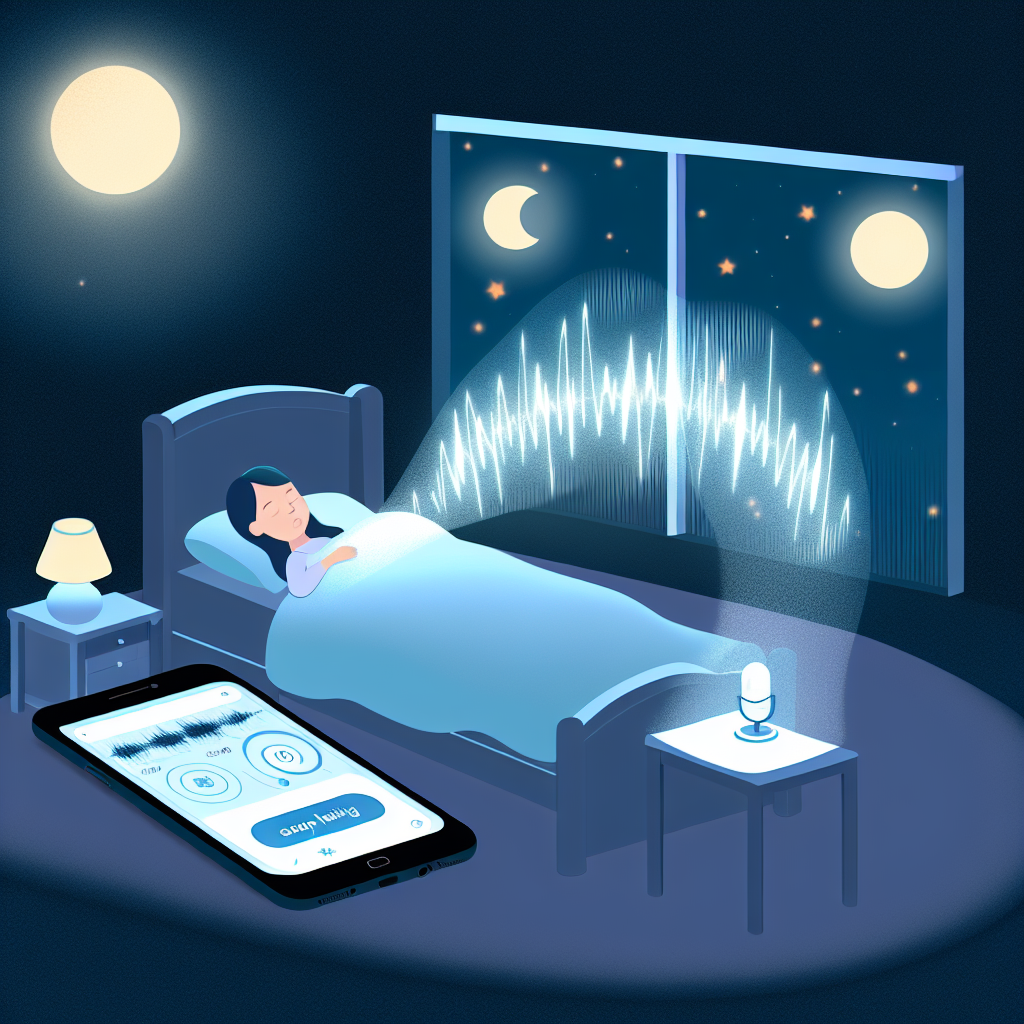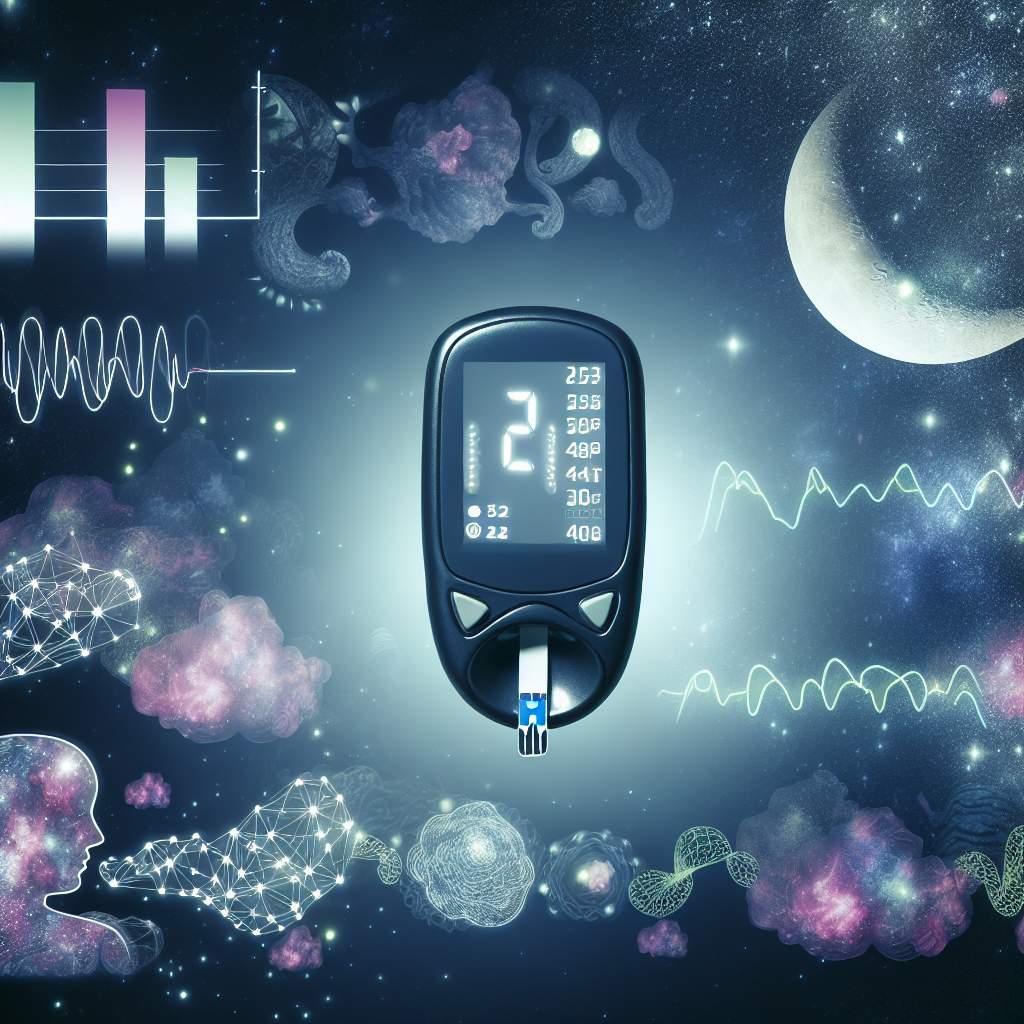Here is the blog post with the requested changes:
Using Somniloquy Detection Apps: Track and Analyze Your Sleep Talking Episodes
Unlocking the Mystery of Sleep Talking: An Introduction
Sleep is a vital bodily function, yet much about our nighttime behaviors remains a mystery even to ourselves. Among the many phenomena that happen during sleep, somniloquy—or sleep talking—is one of the most common, intriguing, and often misunderstood behaviors. Somniloquy refers to speaking during sleep without being aware of it, ranging from simple sounds and mumbling to complex dialogues and monologues. Though usually harmless, frequent sleep talking can sometimes be a sign of underlying sleep disorders or emotional stress.
Traditionally, we would only know about our sleep talking from a partner or family member. However, with the rapid advancements in mobile technology and artificial intelligence, we can now independently record, track, and analyze our nighttime conversations using dedicated apps.
Somniloquy detection apps offer a unique solution by automatically activating during sleep to capture sounds and speech, helping users better understand their sleep patterns, stress levels, and even subconscious thoughts.
These apps are designed to be user-friendly and often integrate with broader sleep-tracking ecosystems, offering an insight into one’s sleep architecture alongside sound analysis. By recording audio only when triggered by noise, they conserve storage and battery life, unlike continuous recording devices. What’s even more interesting is that some apps now employ machine learning algorithms to differentiate between various sleep noises such as snoring, talking, coughing, or environmental sounds.
Sleep talking itself can occur at any sleep stage but tends to be most common during the lighter stages, particularly in non-REM sleep phases. While it typically doesn’t require treatment, persistent or severe somniloquy can sometimes be a symptom of conditions such as REM sleep behavior disorder, night terrors, or stress-related anxiety.
Understanding sleep talking through these detection apps can help demystify what occurs during the sleeping hours. Additionally, tracking somniloquy episodes may help guide individuals toward healthier sleep practices, identify emotional triggers, and optimize their overall sleep hygiene. Whether you’re curious about what you say during the night, concerned about a sleep disorder, or simply fascinated by the hidden aspects of your mind, somniloquy detection apps represent a groundbreaking opportunity to take a deeper look into your nightly rest.
Innovative Features and Expert Insights: How Sleep Talking Apps Are Changing the Game
Recent research into sleep behaviors and technology-assisted monitoring has shown promising potential for fostering better sleep health. According to a study published in the journal Sleep Health, mobile sleep-tracking applications can be a reliable supplementary tool for monitoring sleep disturbances when used appropriately under guidance or personal observation (Smith et al., 2020, *Sleep Health*). Though further clinical validation is needed, particularly for complex sleep disorders, consumer-grade apps have been designed to provide meaningful trends and data interpretation for the everyday user.
Somniloquy detection apps typically offer a host of useful features. Most apps use sound-activated recording, effectively starting only when the microphone detects audible input beyond a specified threshold. This ensures that non-relevant background noise is minimized in the recordings. Many apps also timestamp each recording, making it easier for the user to correlate sleep talking with specific sleep cycles or external events.
Machine learning has dramatically improved the precision of somniloquy apps. Algorithms are trained to distinguish sleep talking from other vocalizations like snoring, coughing, or even external environmental sounds. Apps such as Sleep Talk Recorder and Dream Talk Recorder are leading examples that offer real-time noise differentiation and sophisticated archiving to assess patterns over time.
Moreover, studies such as the one published in the Journal of Clinical Sleep Medicine note that sleep talking often correlates with emotional processing during sleep (Siclari et al., 2017, *Journal of Clinical Sleep Medicine*). By capturing and analyzing sleep utterances, users and healthcare providers can glean potential insights into underlying emotional stressors or psychological states. Some advanced apps even attempt rudimentary sentiment analysis, offering speculative reports on whether the recorded speech reflects anxiety, anger, or happiness.
Importantly, experts in sleep medicine emphasize that while sleep talking is common and often benign, a sudden onset of frequent, loud, or aggressive sleep talking episodes in adults should prompt medical consultation. Apps can be a valuable part of the arsenal for detecting such changes, making it easier to present clear, objective data to sleep specialists for further evaluation.
Apps that integrate with broader health platforms like Apple HealthKit or Google Fit further allow users to track how variables such as exercise, caffeine consumption, or bedtime routines affect sleep talking activity. Such holistic views are crucial because many factors, both lifestyle- and health-related, influence nocturnal behavior.
Ultimately, using somniloquy detection apps, especially in an age where mobile health (mHealth) solutions are gaining prominence, represents a forward-thinking way to nurture self-awareness and proactive health management.
Bridging the Gap Between Wakefulness and Dreams: The Final Word
Our sleep behaviors can reveal much about our physical and emotional well-being, and somniloquy offers a unique window into the unconscious mind. Thanks to technological advances, it is now easier than ever for individuals to track and analyze their sleep talking episodes privately and efficiently.
Somniloquy detection apps stand at the intersection of health, technology, and psychology, empowering users to understand and manage one of sleep’s most curious phenomena.
By recording and analyzing bedtime speech, these apps help identify potential stressors, highlight early signs of sleep disturbances, and deepen our understanding of our nightly lives. While they are not a substitute for medical diagnosis, they serve as excellent tools for monitoring trends and bringing valuable observations to healthcare provider discussions.
Whether you are seeking insight for health reasons, curiosity, or personal reflection, sleep talking detection apps offer a fascinating way to bridge the gap between wakefulness and the subconscious world of sleep.
References
– Smith, M., Wallace, R., & Boulos, D. (2020). Mobile Apps for Sleep: A Guide for Clinicians and Public Health Professionals. *Sleep Health.* [Read the study](https://www.sleephealthjournal.org/article/S2352-7218(20)30100-9/fulltext)
– Siclari, F., Baird, B., Perogamvros, L., & Bernardi, G. (2017). The neural correlates of dreaming. *Journal of Clinical Sleep Medicine.* [Read the article](https://jcsm.aasm.org/doi/10.5664/jcsm.6474)
– [Sleep Talk Recorder.](https://www.sleeptalkrecorder.com/)
– [Dream Talk Recorder.](https://dreamtalkrecorder.net/)
– [American Academy of Sleep Medicine – REM Sleep Behavior Disorder.](https://sleepeducation.org/sleep-disorders-by-category/parasomnias/rem-sleep-behavior-disorder/)
Summary:
Somniloquy, or sleep talking, is a common yet often misunderstood sleep behavior. With the rise of mobile apps, individuals can now independently record, track, and analyze their nighttime conversations, gaining valuable insights into their sleep patterns, emotional states, and potential sleep disorders. These apps use innovative features like sound-activated recording, machine learning algorithms, and integration with broader health platforms to provide users with a unique window into the subconscious world of sleep. By bridging the gap between wakefulness and dreams, somniloquy detection apps offer a fascinating way to nurture self-awareness and proactive health management.

Dominic E. is a passionate filmmaker navigating the exciting intersection of art and science. By day, he delves into the complexities of the human body as a full-time medical writer, meticulously translating intricate medical concepts into accessible and engaging narratives. By night, he explores the boundless realm of cinematic storytelling, crafting narratives that evoke emotion and challenge perspectives.
Film Student and Full-time Medical Writer for ContentVendor.com



